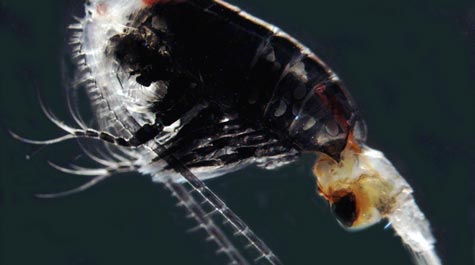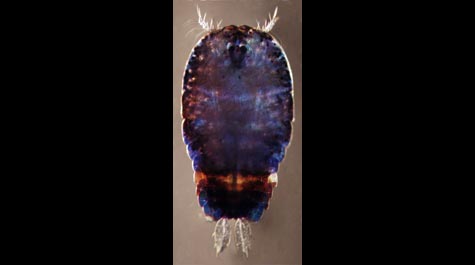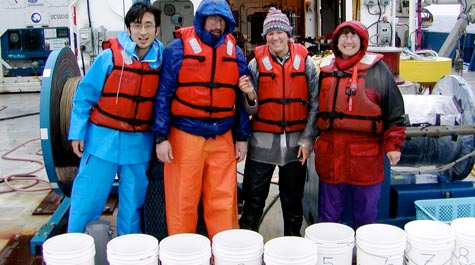From Plankton to Planet
Steinberg's research helps reveal ocean’s role in global warming
Each evening, a multitude of small sea creatures rises from the inky depths to feast on microscopic plants growing in sunlit surface waters. At dawn, they reverse course, descending to spend another day under the cover of darkness. By almost any measure, this daily migration rivals the great seasonal movements of caribou or arctic terns. Yet its magnitude was virtually unknown until the 1940s, and many of its mysteries remain.
VIMS Professor Deborah Steinberg is unraveling these mysteries by studying the migrating animals, what they eat, and the role they play in the cycling of ocean carbon and nutrients. Her studies have brought her from tropical seas to the icy northeastern Pacific. She’s particularly interested in how the animals’ consumption of vast quantities of carbon-rich plant material affects the flow of carbon dioxide from the atmosphere to the deep ocean—the so-called “biological pump.” Knowing how much carbon dioxide stays airborne and how much dissolves in seawater helps scientists determine how this greenhouse gas affects Earth’s climate.
Steinberg’s team does much of its fieldwork at night, when migrating animals are nearer the surface and easier to net. Once collected, they identify the animals, measure how fast they digest their food, and dissect them to see what they eat. A glance under her microscope reveals animals of two distinct sizes. Migrators, which must swim great distances to and from their feeding grounds, are larger and more powerful than the plankton that feed in surface waters day in and out.
Steinberg’s findings inform the climate models that are used to predict changes in the global carbon cycle and thus the rate and magnitude of global warming. Whereas early models used generic equations to represent the biological pump, work by Steinberg and others shows that the pump’s efficiency differs markedly in space and time, depending in great part on the make-up of the planktonic community.
In areas where smaller, stay-at-home plankton dominate, more of the plant carbon remains near the surface. That’s because these animals package their wastes in small “fecal pellets” (aka poop) that are unlikely to sink. The carbon in these pellets can readily return to the air as carbon dioxide gas. Migrators make heavier fecal pellets and swim downward each day. In areas they dominate, carbon moves more rapidly to the deep ocean, where it can be locked out of the atmospheric greenhouse for hundreds of years. Says Steinberg, “Our research shows that the planktonic community is very diverse and changeable, and that ‘who’s who’ really matters to global warming.”





